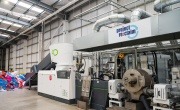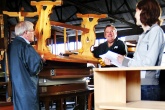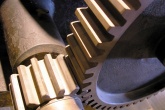European remanufacturing could value €100bn by 2030
 The European remanufacturing industry could triple in worth by 2030, given the right governmental support and investment, says the European Remanufacturing Network (ERN).
The European remanufacturing industry could triple in worth by 2030, given the right governmental support and investment, says the European Remanufacturing Network (ERN).
The ERN estimates that the European remanufacturing industry, which returns products to their original design specifications by restoring or replacing components, is currently worth just under €30 billion (£22.5 billion), employing around 190,000 people.
A market study carried out by consultancy Oakdene Hollins on the network’s behalf suggests that with ‘supportive governmental policies’ and industry investments, the industry could grow to €100 billion (£75 billion), with as many as 500,000 employees, by 2030.
The study, which was funded by the European Union’s Horizon 2020 research and innovation programme, says that despite remanufacturing’s importance to the circular economy, there are a number of barriers currently hindering the industry’s growth. It argues that in Europe, ‘cross-sectoral activities to facilitate knowledge transfer and promote the industry do not exist in remanufacturing, unlike in the recycling industry’.
It adds that the European remanufacturing industry loses competitiveness when set against the ‘more organised economies’ of the USA and China, creating the need for a ‘European-level solution to encourage remanufacturing throughout Europe’.
Accordingly, the study focuses on nine key sectors to reveal economic value, employment and approximate carbon benefits. The sectors studied in the report are: aerospace, automotive, electronic and electrical equipment (EEE), furniture, heavy duty and off-road (HDOR) equipment, machinery, ships, medical equipment and rail rolling stock.
Study findings
Aerospace is currently the biggest employer in the European remanufacturing industry, providing 71,000 jobs and turning over €12.4 billion (£9.2 billion). This is followed by the automotive industry (43,000 jobs, £5.5 billion) and EEE (28,000 jobs, £2.3 billion). Combined, the UK and Ireland form Europe’s second biggest remanufacturing industry (turning over €4.5 billion/£3.4 billion), behind Germany (€8.7 billion/£6.5 billion).
The study found that the overall ‘intensity’ (the ratio of remanufacturing to new manufacturing) was just 1.9 per cent, which, it says, leaves ‘substantial headroom for growth, given the right interventions and frameworks’.
A survey carried out as part of the study found that customer recognition, the availability of ‘core’ – a used part intended to become a remanufactured product – the quality of core and high labour costs are among the top barriers to remanufacturers.
Potential of remanufacturing
Among the suggestions in the study for policy measures that would support remanufacturing were tax relief for customers buying remanufactured products, obligations on manufacturers to create a certain amount of remanufactured products and design for the practice and the encouragement of public-sector procurement to focus on remanufactured products.
Approximate current growth rates through to 2030, with some ‘positive organic growth’ in understanding from manufacturers and consumers, would lead to a 2030 turnover of €46.3 billion (£34.7 billion) with around 300,000 people employed in the industry and 16 million tonnes of carbon dioxide being averted by remanufacturing practices. This represents an increase of 50 per cent on today’s levels.
However, with a transformational scenario, where remanufacturing becomes a key strategic pillar for the EU, with investment moving from ‘lower level waste hierarchy activities’ (recycling, recovery and disposal) to focus on remanufacturing and reuse, the value of the industry could reach close to €100 billion (£75 billion) by 2030. This scenario would also see the industry employing over half a million people and averting around 21 million tonnes of carbon dioxide equivalent.
'Undervalued part of industrial landscape'
In a press release announcing the market study, the ERN stated: ‘Remanufacturing is considered an important component of a resource-efficient manufacturing industry and a key strategy within the circular economy: by keeping components and their embodied material in use for longer, significant energy use and emissions to air and water can be avoided.
‘Despite these benefits, remanufacturing currently is an undervalued part of the industrial landscape and an under-recognised sustainable industry. Without coordinated support, European remanufacturing could lose competitiveness against major competitors, like the USA and China, who already have a common vision and strategy for remanufacturing. ERN’s market study is a first step in mapping the potential of remanufacturing in Europe.
‘ERN will add value for (aspiring) remanufacturers by mapping the challenges of remanufacturing business models, product design and processes.’
Seigo Robinson, Senior Consultant at Oakdene Hollins and one of the report’s authors, added: “The top motives for businesses to remanufacture are higher profit margins, environmental responsibility, a strategic advantage and increased market share. These all point to an encouraging view of the future of the remanufacturing industry from those within the business.”
The full ‘Remanufacturing Market Study’ can be downloaded from the European Remanufacturing Network’s website. 






